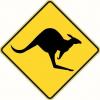Hi all, anything I need to know about sharpening the blade from my moving fillister? Specifically, do I sharpen both of the sides. As the photo shows both have an existing bevel.
Im going to regrind the bevel(s) close to the already existing bevel. You probably can’t tell from the photo but the blade is all knicked up. Anything I should be careful of? I have a tormek so i won’t overheat the blade.
I also know know that I need to flatten the back. I will home freehand after grinding. Any advice is greatly appreciated!






 Reply With Quote
Reply With Quote







